The Wisconsin That Was
Artist Terese Agnew’s powerful exhibit celebrates, laments state’s progressive past.
An unpretentious storefront on grimy 4th St. opens into the handsome cavernous RedLine Milwaukee Gallery, blocks from Downtown. It is being transformed through March 25 by artist Terese Agnew and a squad of artisans and helpers into a vibrant resurrection of the Wisconsin that was.
There are added attractions on opening night – which is tonight — for “Writing in Stone,” with two special shows starting at 5 p.m. featuring living sculptures (who later turn into musicians Jaia Wilbour and Raina Gravatt) and storyteller Blanche Brown invoking the desperate tale of Caroline Quarlls, the 16-year-old slave who was the first to use Wisconsin’s Underground Railroad in 1842.
As for the exhibit that will continue into March, “Writing in Stone” is a physical stroll among monuments, imagined woods, talking trees and real sayings of Wisconsin’s rich history. It is the latest offering from Agnew who credits fellow artist Diane Dahl and a legion of helpers from the Vernon County artistic community. But it is Agnew who has become famous for her ability to marry art — in thread, quilt, wood and tablet form — with poignant social commentary.
From her days as a graduate student flying a dragon out of the North Point Water Tower to her socially attuned quilts at the Milwaukee Art Museum, also featured on PBS – and especially to her “Portrait of a Textile Worker,” sewn from thousands of clothing labels into a piece of art that has toured the globe — Agnew has demonstrated a knack for seizing our moral compass within the textures of modern art.
The creativity of “Writing in Stone” stems mainly from the inventive nonlinear juxtaposition of workmanlike elements, dotted with doors, keyholes, stumps and fresh motifs. The concept is to etch the words even more than the artistic presentation into our heads, while the juxtapositions help the ideas to leap over time, geography and place.
“Writing in Stone” sweeps through the recent past when the state and its progressive ideas were the envy of all other states for the depth of conservation and architectural insights, its pioneer place in social issues, and its vibrant personalities, from tribal speakers to passionate advocates to quiet Latino workers. All made Wisconsin a bedrock of American values and innovations with a political and cultural diversity that today seems quite astounding.
Inspirational influences on Wisconsin thought are present in the exhibit (Thomas Paine, Martin Luther King and Theodore Roosevelt, who was actually shot in Milwaukee when campaigning for president). But so are the key Wisconsin leaders and thinkers:
John R. Commons, a UW economist and labor historian until 1945 who had a hand in virtually every labor protection law enacted in a progressive state’s 20th century and once proclaimed: “Unlike other commodities, labor has a soul.”
Lloyd Barbee, who worked tirelessly for school integration with a still surprising eloquence. The Menominee Forest Keepers, who wrote presciently about how to harvest a forest to keep it robust through hard economic and ecological times. Emma Toft, who fought to preserve Door County woodlands, defying entrenched powers to save the beauties of the earth.
Other fitting monuments and quotes, with sprinkles of historic photos, remind us of nature essayist Aldo Leopold, Prairie school architectural giant Jens Jensen and Earth Day founder Gaylord Nelson and offer cautionary tales about environmental disasters — the extinction of the passenger pigeon and the threatened monarch butterfly.
There are oases. One is a natural sound cave of trees where the murmurs of nature are mixed with the wisdom and musings of Walter Bresette, the Ojibwe treaty and environmental pioneer who helped found Witness for Nonviolence and the Wisconsin Green Party. This interlude and tribute to tribal oral history stem from a tireless audio recorder, Agnew’s husband and former UW-Milwaukee film professor Rob Danielson.
Another startling reminder propels a monument to Lee Dreyfus, the famously red-vested Republican governor of Wisconsin who said “There is nothing more private or intimate than who you live with and who you love.” And then he signed the nation’s first gay rights bill – in 1982 Wisconsin.
You also stumble into what seems an un-Wisconsin motif – a colorful Mexican cemetery of vivid hues embroidered with a quote from laborer and union organizer Jesus Salas in the 1960s, rhapsodizing about traveling from Wisconsin crop to Wisconsin crop. All these moments rendered artistically are about people who looked away from themselves – into the land, into their society, into others. It is an exhibit intent on reoccupying Wisconsin.
The Mexican cemetery “had to be there,” noted Gene Lombard. He and his wife Lynette left South Africa’s apartheid decades ago for what they perceived as a progressive state. Octogenarians and cooperative artists, they encouraged Agnew to add the colorful Mexican cemetery to remind Anglo-Saxons “we exist because they fed us,” he said.
Another craftsman who had jumped to Agnew’s cause — Elliot Medows, leader of The Ark in Viroqua County and a versatile set builder — felt “the time for this exhibit is now – it’s become way too easy for this stuff to become buried.”
Agnew wants visitors to draw their own conclusions. “It’s more essential than ever not to forget the best and most honorable people and ideas of the past,” she said, recalling that the concept for the exhibit came from walks through a hilltop cemetery near her farm. “This is what we are, this is what we learned from our ancestors.”
Master carpenters Dave Moynihan and Jim Krenn built many of the sculptures. Writer Judy Woodburn has provided a step-by-step guide for visitors.
After appearing at RedLine Milwaukee, 1422 N. 4th St. through March 25, “Writing in Stone” will be exhibited around the state for two years, with many shows in the works. It is already booked for Viterbo University in La Crosse September 8-13, 2017, and The Watrous Gallery in Madison from September 16 to November 5.
Sponsors include Pieper Electric, Ideal Mechanical, the Kickapoo Cultural Exchange, and a generous RedLine Milwaukee exhibition grant provided by the Greater Milwaukee Foundation.
Except for those special opening shows Friday night, Redline Gallery hours are 10 a.m. to 7 p.m. Thursdays, 10 a.m. to 3 p.m. Fridays and 10 a.m. to 3 p.m. Saturdays.
Writing in Stone Photo Gallery by Tom Bamberger
Art
-
Winning Artists Works on Display
 May 30th, 2024 by Annie Raab
May 30th, 2024 by Annie Raab
-
5 Huge Rainbow Arcs Coming To Downtown
 Apr 29th, 2024 by Jeramey Jannene
Apr 29th, 2024 by Jeramey Jannene
-
Exhibit Tells Story of Vietnam War Resistors in the Military
 Mar 29th, 2024 by Bill Christofferson
Mar 29th, 2024 by Bill Christofferson

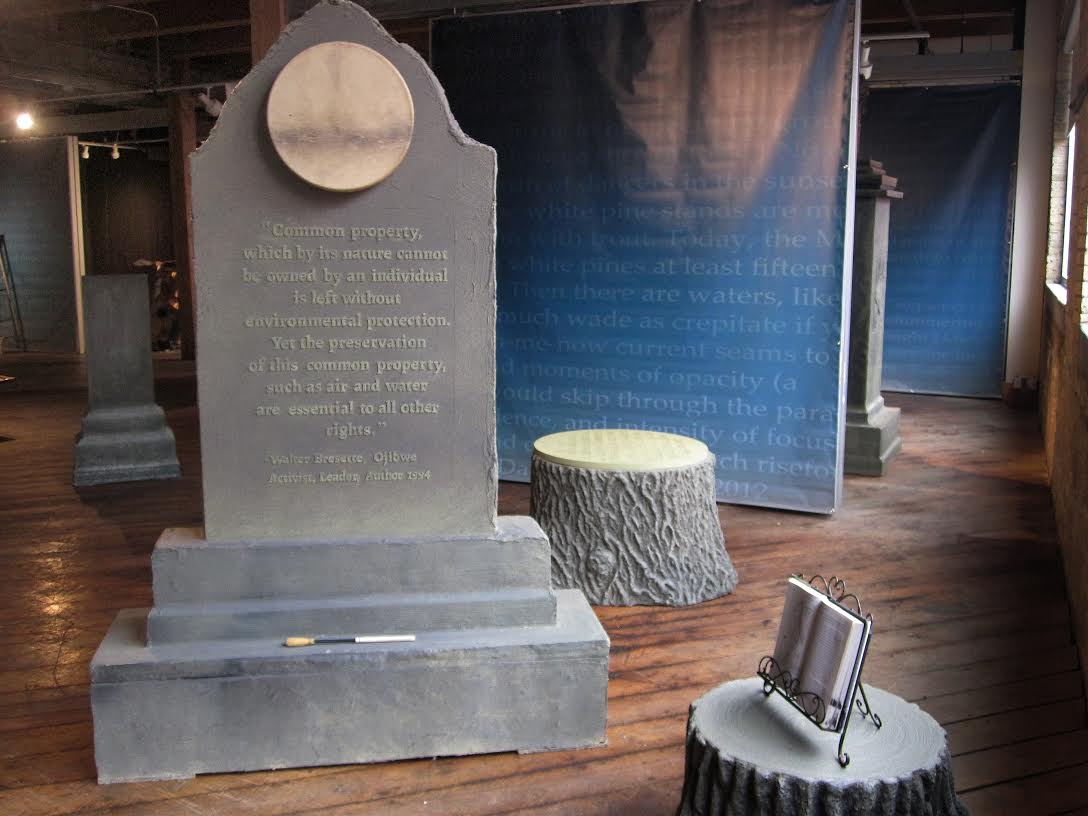
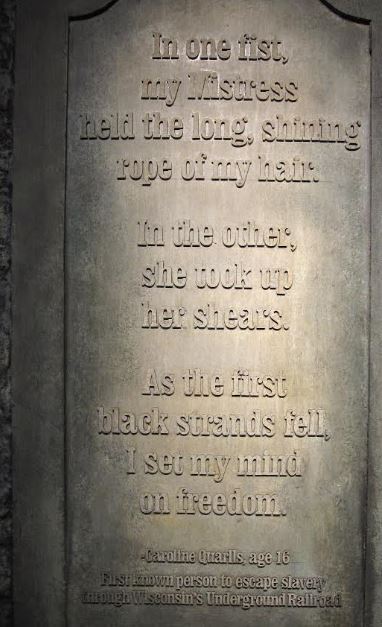
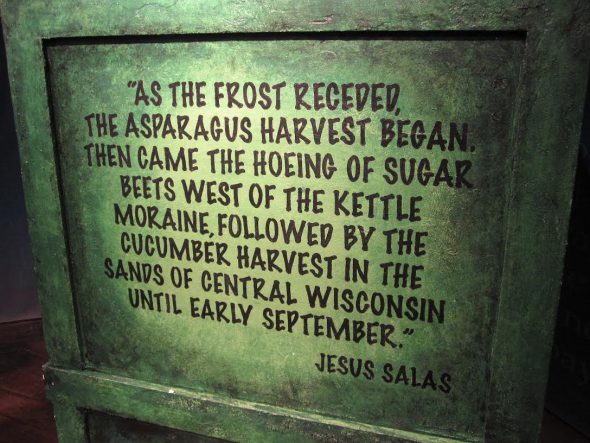
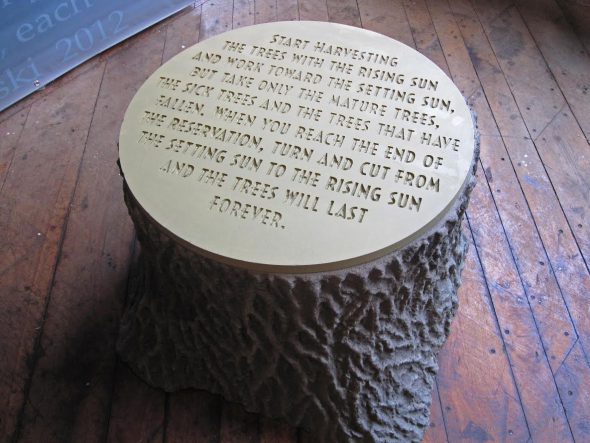
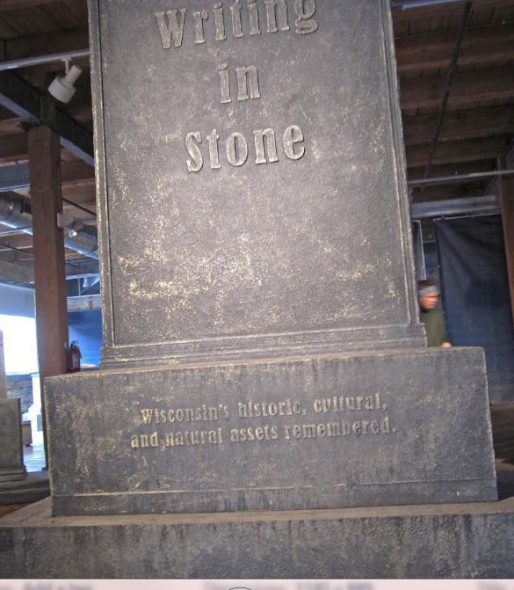
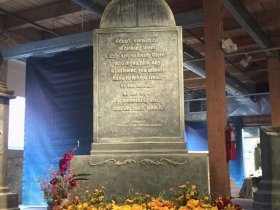
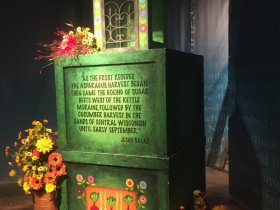
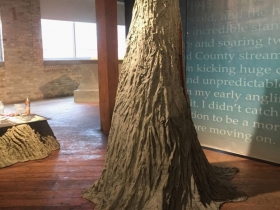
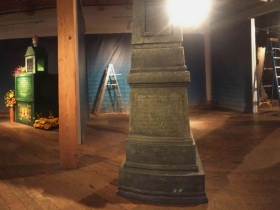
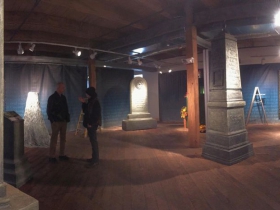
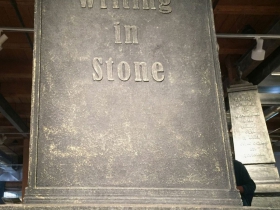




















We are so lucky to have Terese Agnew’s mental abilities and artistic sensibilities among the artists of Milwaukee! Bravo on this current exhibit!